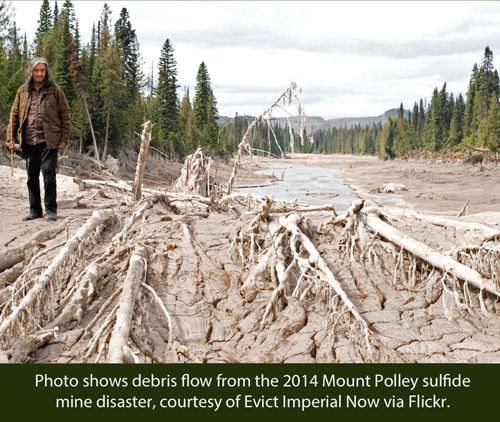On November 3, 2016 PolyMet filed its Permit to Mine with the Minnesota Department of Natural Resources. This year has seen a flurry of permit applications by PolyMet, all leading up to this big application. Here at the Minnesota Environmental Partnership, our coalition has been fighting the PolyMet mine for years now, and this permit application is one of the biggest steps in the permitting process for the mine.
But first, let’s review. Why is PolyMet such a big deal?
- PolyMet’s Northmet Mine is a Copper-Nickel Sulfide Mine, and this type of mining has never been done safely.
- The PolyMet Mine is proposed for an area of the iron range that directly feeds Lake Superior and a spill could potentially move north to contaminate Boundary Waters Canoe Area watersheds.
- Water from the proposed mine site would need to be treated for at least 300 years after the mine has closed, and the plant site would need to be treated continually for 500 years after closure.
- PolyMet is an environmental justice issue, posing significant threats of mercury contamination to water and human health. The mine site is located on Treaty lands, where the Lake Superior Chippewa retain rights to hunt and fish on the land, and the mine itself will have downstream impacts on Seded Territory and downstream tribal resources. Rights to hunt and fish are essential to preserve cultural identity for Minnesota tribes. (Read WaterLegacy’s Environmental Justice Factsheet here.)
Now that we’re all on the same page, let’s dig in to what the Permit to Mine means.
The Permit to Mine is the most significant permit PolyMet has to have approved before it can open the mine. This Permit includes over 15,000 pages. So far, the company has applied for 20 separate permits.
The Permit to Mine process is in place to “control the possible adverse environmental effects of mining by ensuring orderly construction and development of a mine, sound operational practices, and progressive reclamation of mined areas” (see DNR website). The Permit to Mine is the last permitting step before PolyMet can begin construction, but the process of review of the Permit to Mine is a lengthy one. Now that the application has been submitted, the Department of Natural Resources (DNR) will determine if enough information has been provided to review the application. Next, it will move through an application review period. Once the application has been reviewed and deemed complete, effected tribes will be notified during the Tribal Pre-Notice Period.
After these stages have been completed, the DNR will have a period of Public Notice and Objections. At this point, the agency will host public meetings and hearings to hear from the people of Minnesota about this dangerous project. The comment period will be 52 days long, likely to occur this upcoming summer 2017. Following the public comment period, the DNR will review the comments and ultimately announce their decision.
So what’s next?
There is significant public concern over this mine, as evidenced by the thousands of public comments responding to the Environmental Impact Statement for the project. There are still unresolved disputes over the factual information presented in the Environmental Impact Statement. In particular, the studies presented by PolyMet, co-lead agencies, and cooperating agencies. There is an entire chapter in the Environmental Impact Statement dedicated to outlining the major differences of opinion and findings.
These concerns are still valid and must be voiced once again during the Permit to Mine public comment period.
The Mining Cluster is getting ready for the upcoming legislative session, and the upcoming public comment period. We will continue to keep you updated on ways to engage as a citizen concerned about the disastrous impacts of the PolyMet Northmet Mine, including public comment periods and other ways you can voice your concern.

Thank you for keeping me informed on the PolyMet Project and let me know what I can do to help more.
Please keep me updated on ways to engage and comment.
Thank you.